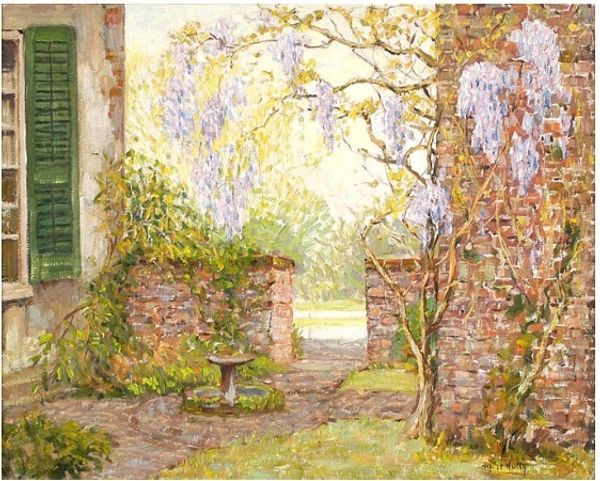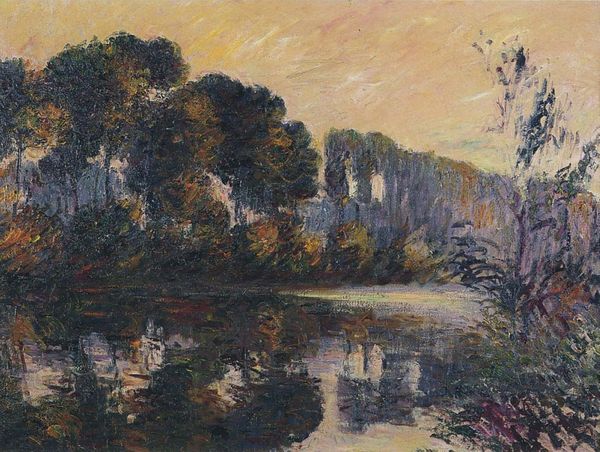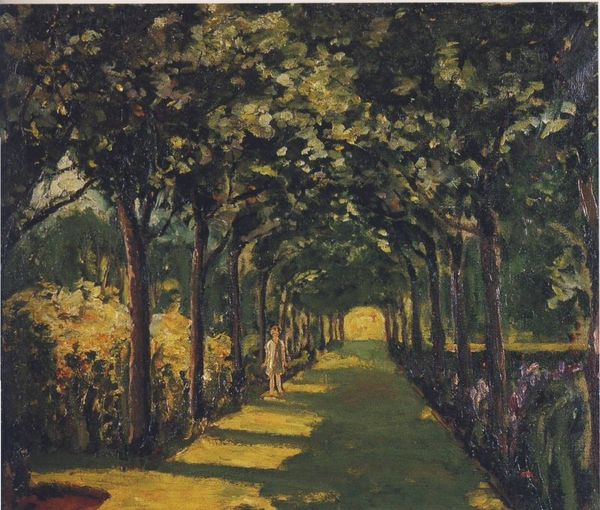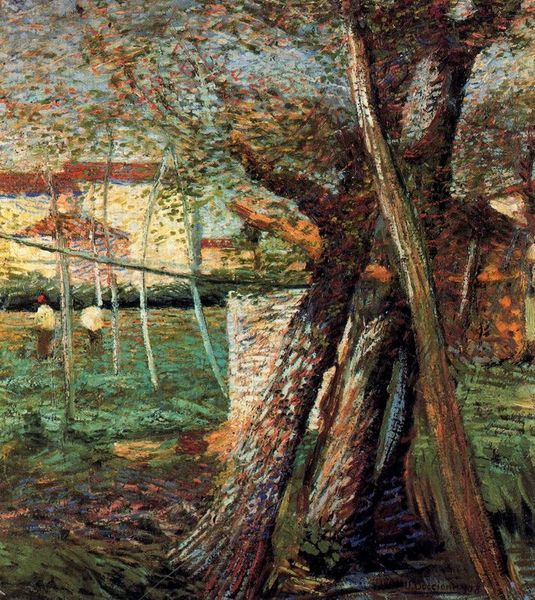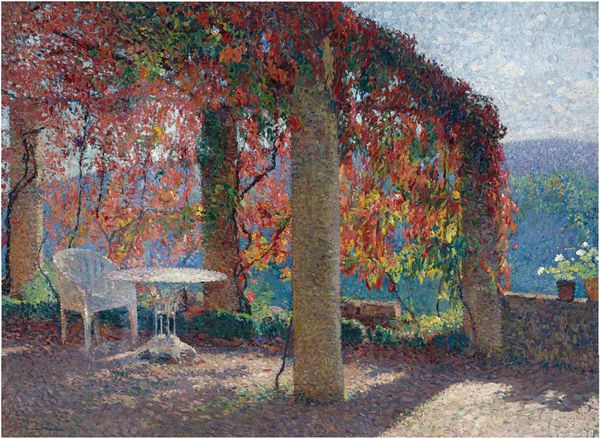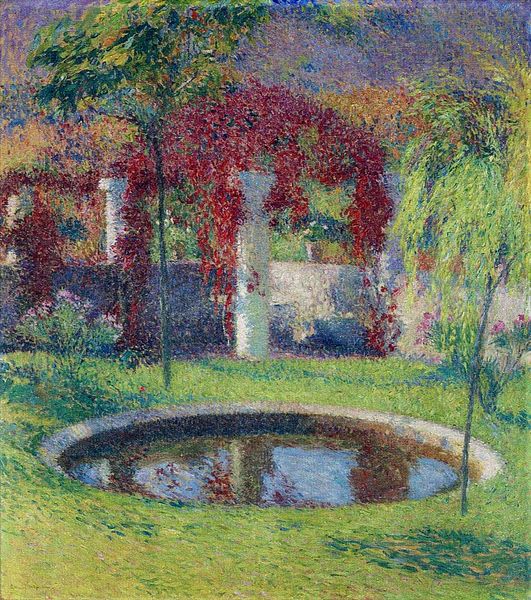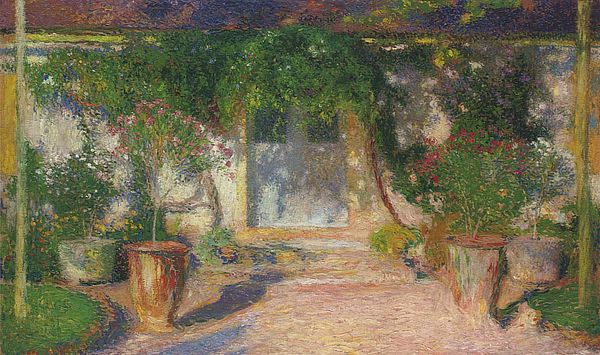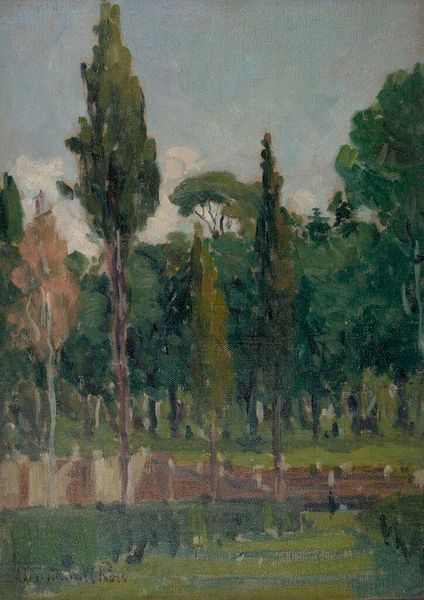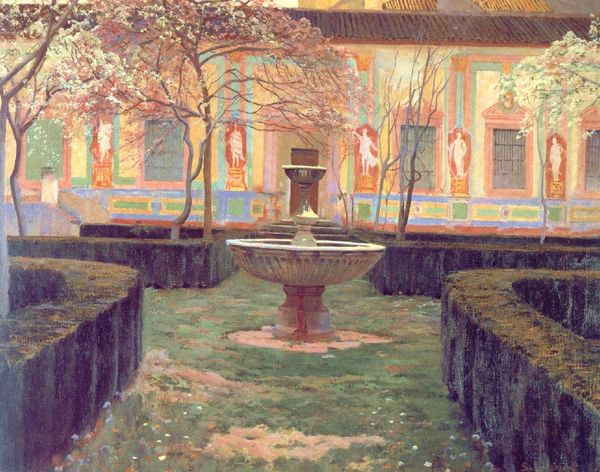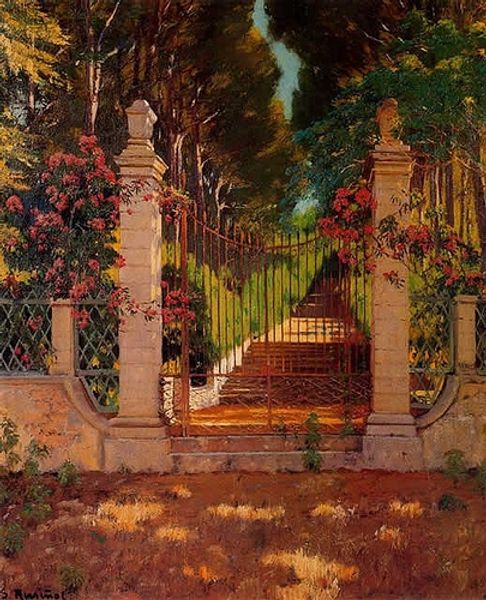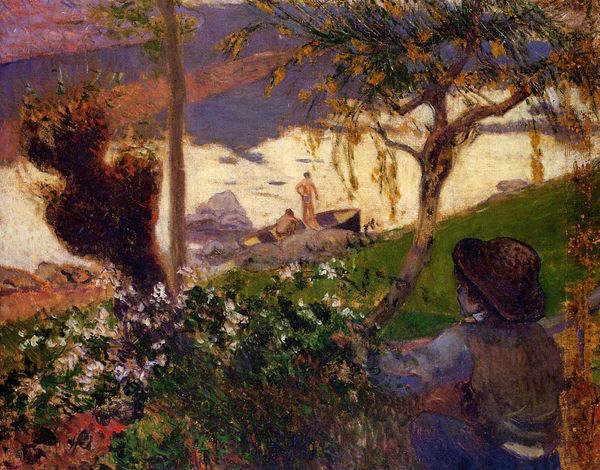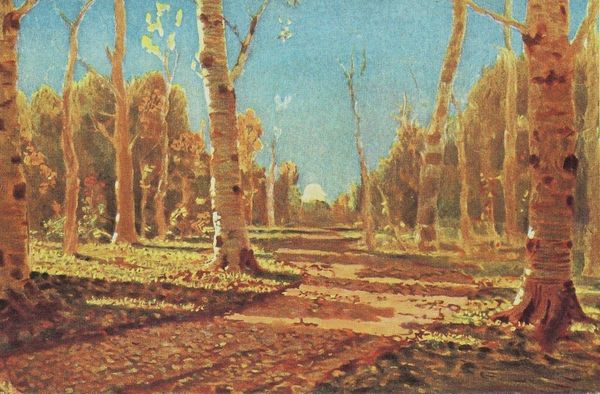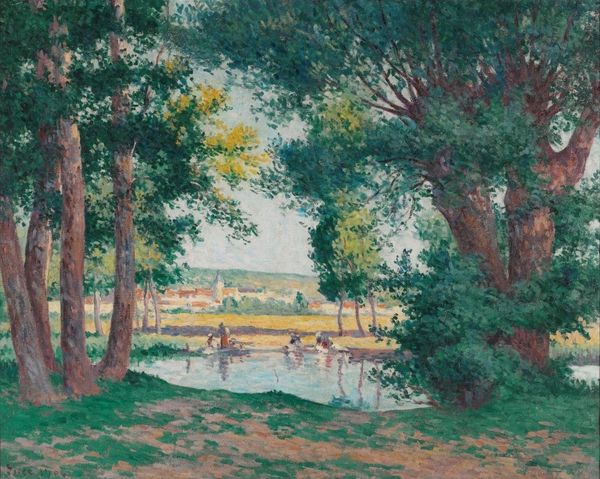
Copyright: Public domain
Editor: Ferdinand du Puigaudeau's "The Trellis by the River," painted in 1911 with oils, captures a moment of tranquil riverside scenery. The thick brushstrokes really give a sense of texture, especially in the trellis itself. What do you see in this piece? Curator: For me, the emphasis falls on the conditions of production. Looking closely, one can see the build-up of impasto—the layering of oil paint becomes almost sculptural. It invites a reflection on the labor involved. What social class do you think would commission a piece made *en plein air* but seemingly depicting leisurely moments in an idyllic setting? Editor: Hmmm, I hadn’t considered that. Perhaps the painting's emphasis on leisure is designed for a wealthy patron to contemplate their own privileges? The trellis itself seems like a constructed space for relaxation. Curator: Precisely. Consider the materials – oil paint itself, the canvas. These weren't universally accessible. The ability to commission, own, and display this work reflects a specific socio-economic status. Du Puigaudeau even builds upon the style of Impressionism – using it, in essence, as a signifier of wealth and bourgeois taste. Note also, this wasn't just plein-air; that boat required laborers to construct, to sail, and to maintain, too! Editor: So, rather than just appreciating the landscape, we should be questioning the social framework that enabled its creation, and its consumption? Curator: Exactly. Thinking about who could afford this painting, where it might have been displayed, reveals as much as the image itself. The artist and their world play as vital of a role as that dreamy landscape does. Editor: This has completely shifted my perspective on landscape painting. I’ll never look at a trellis the same way again. Curator: Indeed! It’s about seeing beyond the surface, digging into the context to fully understand the piece and all that made it possible.
Comments
No comments
Be the first to comment and join the conversation on the ultimate creative platform.
